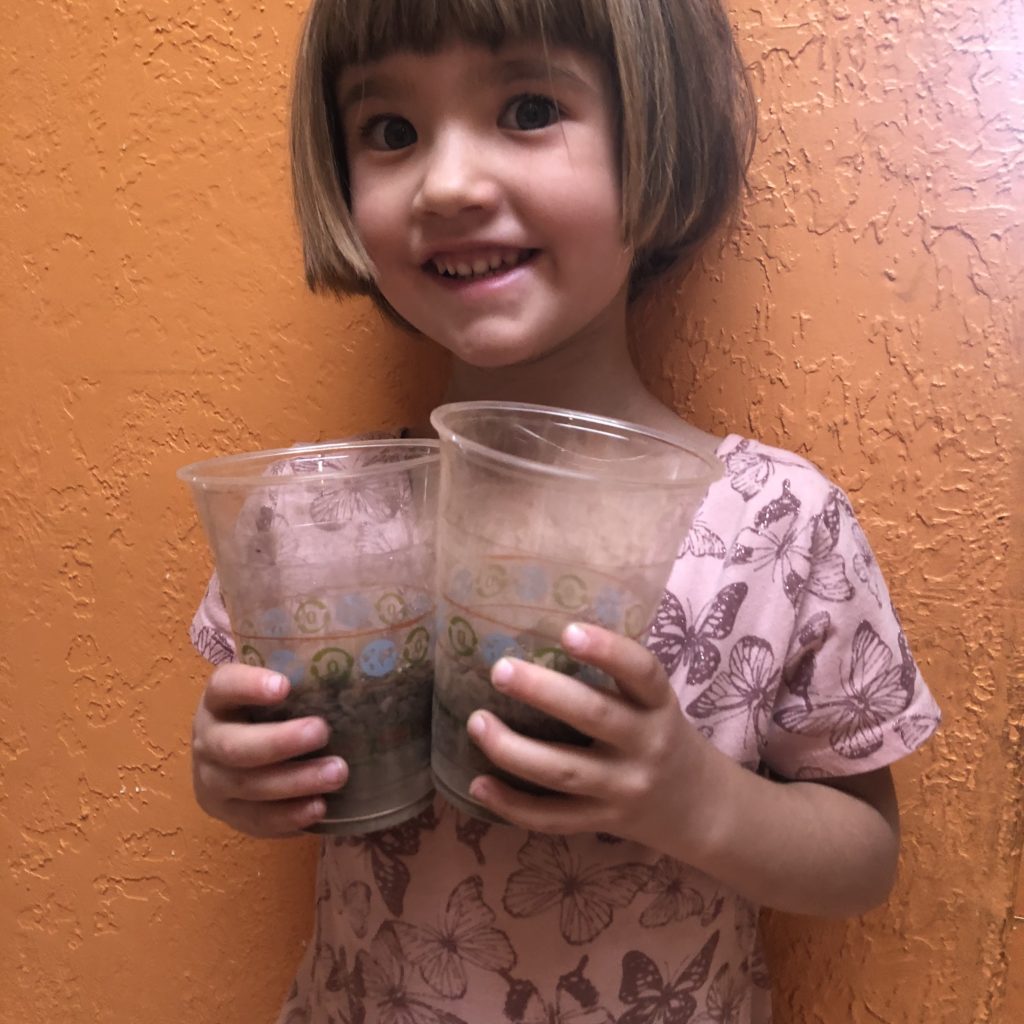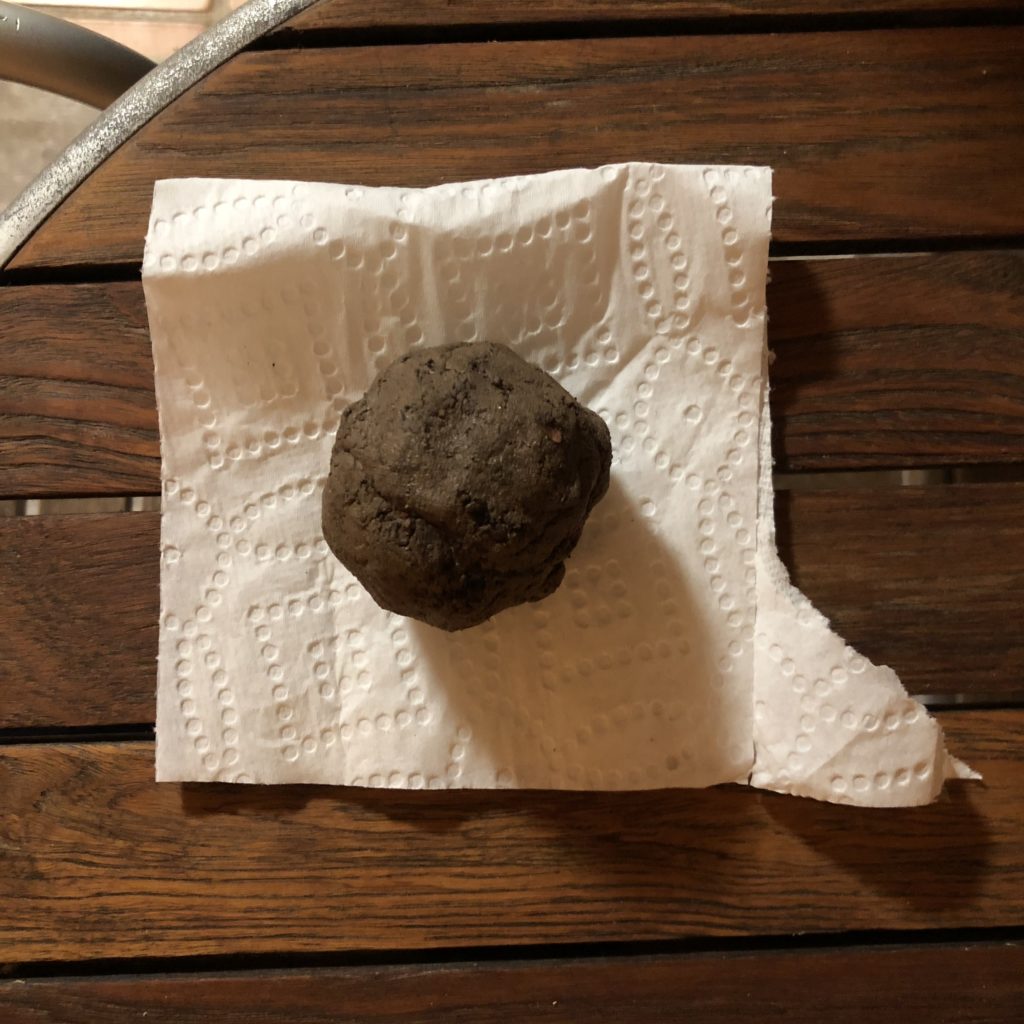Yesterday we posted an in-depth explainer to help our readers understand the differences between soil, mulch, compost, and dirt. It’s International Compost Awareness Week, so we should really be turning our full attention to composting now. But mulching is so important to our arid high desert climate that I decided to linger on it for one more day. I promise the rest of the week will be all about compost.
Anyway, last week my daughter and I did a little experiment with mulching soil samples from our backyard, and I just wanted to share what we did:

Add equal amounts of soil to two cups 
You may need to remove irregularities like stones or wood chips. 
Add equal amounts of water to each cup until they form a loose mud. 
Leave one cup bare and cover the other with whatever mulch you have available. We used pecan shells. 
Place both cups out in the sun.
We checked on the experiment a couple times per day, watching for signs that either cup was drying out.
We’d overwatered the soil a bit, but it was also quite hot last week (highs in the mid-90s, lows around 60), so the extra water didn’t slow us down too much… within 24 hours the bare soil was getting dry and crusty on top and there was a visible difference between the two cups.
By 48 hours the bare soil appeared to have dried out almost completely. Were anything growing in it, it would have been about time to water again. So we brought the two cups inside, removed the mulch, and compared the two soil samples.
As our little experiment demonstrated, a heavy layer of mulch dramatically reduces evaporation from top soil. This is important not only to conserve our precious water resources, it’s also critical for keeping your plants alive on hot summer days.
Adding compost to your soil also helps with water retention, and benefits your soil and plants in other ways, but regardless of what you add to your soil, a mulch layer on top of your soil is essential when desert gardening.



